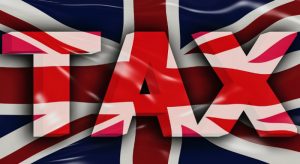
This is a significant change and one where SME businesses need to prepare, or ensure, their accounting software providers – whether NetSuite, Oracle, SAP, Sage, Unit4, Xero or whichever, have completed the necessary preparation (most large enterprises ‘probably’ file digitally already). This will only apply to businesses with a turnover above the VAT threshold; smaller, non-VAT-registered businesses will not be required to use the system – although they can choose to do so voluntarily.
Digging deeper into ‘making tax digital’
Her Majesty’s Revenue & Customs (HMRC) has announced its objective to make VAT digital in 2019. Under the new scheme, businesses will have to have online tax accounts to track professional and business transactions. Quarterly businesses will need to submit returns which indicate the taxes due.
The online system is intended to:
- be more transparent
- remove some of the inaccuracies and inefficiencies that hinder paper tax filings.
One important point to note. This is not the same as making a return online. Most VAT registered taxpayers have done this for years. Making tax digital has three important distinctions:
- bank transactions and other financial information will flow automatically into the business’ digital tax account, whether or not they declare the entries as income or expenses (this is a major change)
- submissions will need to be made at least once per quarter (no difference here)
- submissions will need to be filed using some form of software that integrates with that businesses digital tax account (this may require businesses to buy new software or upgrade).
What is happening?
While the ‘threat’ of ‘making tax digital’ has existed for some time, the Treasury proposes a two-part roll out:
- as described above, from April 2019, businesses with a turnover above the VAT threshold will have to keep digital records for VAT purposes and make the quarterly returns from these digital records (as an automated submission process)
- from 2020, businesses may be asked to keep digital records and update HMRC quarterly for other taxes.
The ‘making tax digital’ implications for systems
To satisfy the HMRC requirements, businesses will use software to keep their VAT records. Those records will be the source for filing VAT returns (and, from 2020, other tax returns).
In theory (if you believe a word the government or HMRC proclaim) frequent interactions should be more efficient. But for whom? HMRC. It argues this will avoid backlogs of work to get through (backlogs at HMRC?).
At Xero (an accounting software firm), they describe how “more frequent submissions will also help your clients avoid nasty surprises. Big tax bills can accumulate over the course of a year but when tax is calculated quarterly, things are far less likely to get out of hand. The new system will also create more opportunities for advisors to help with tax planning.
“If your clients choose to use accounting software, they should make sure it has online capabilities. Desktop accounting software hasn’t traditionally been able to submit tax online.
“As a bonus, online accounting software also allows you and your client to:
- “access the business’s accounts from anywhere there’s internet
- “create ‘bank feeds’ so transaction data flows straight into the ledger
- “collaborate online by leaving and receiving messages within the software.“
What does this mean
Online accounting software can sync with other online services, for example Point of Sale, inventory management and time-recording apps. It sounds good?
Reflect on what the Government described in 2017, that the benefits are:
“Better use of information: MTD presents significant benefits for our customers. It will mean that they will not have to give HMRC information that it already has, or that it is able to get from elsewhere – for instance from employers, banks, building societies and other government departments. Digital tax accounts for all will mean that customers can see the information that HMRC holds and be able to check at any time that their details are complete and correct. HMRC will use this information to tailor the service it provides, according to each of our customers’ individual circumstances.
“Tax in real time: Our customers should not have to wait until the end of the year or longer to know how much tax they should pay. HMRC will collect and process information affecting tax as close to real time as possible, to help prevent errors and stop tax due or repayments owed building up.
“A single financial account: At the moment most taxpayers cannot see a single picture of their liabilities and entitlements in one place – we are changing that. By 2020, customers will be able to see a comprehensive financial picture in their digital account, just like they can with online banking.
“Interacting digitally with customers: Our customers (and their agents) will be able to interact with HMRC digitally and at a time to suit them. They already have access to a digital account which will present them with an increasingly personalised picture of their tax affairs, along with prompts, advice and support through webchat and secure messaging. And digital record keeping software will link directly to HMRC systems, allowing customers to send and receive information directly from their software.”
To Enterprise Times all four of these ‘rationalisations’ sound like benefits for government and HMRC, not for the tax paying business who may have to pay extra to conform. The one possible plus is that government IT projects in general (think Universal Credit) and HMRC in particular are notorious for failing to achieve their objectives.
Unfortunately, the down side of ‘making tax digital’ is, more likely, increased government and HMRC intrusion accompanied by the probability HMRC’s systems will be unable to cope in March 2019. The chances of chaos are all too real. Yet it will be businesses, not the government or HMRC, which will pay and suffer.


























